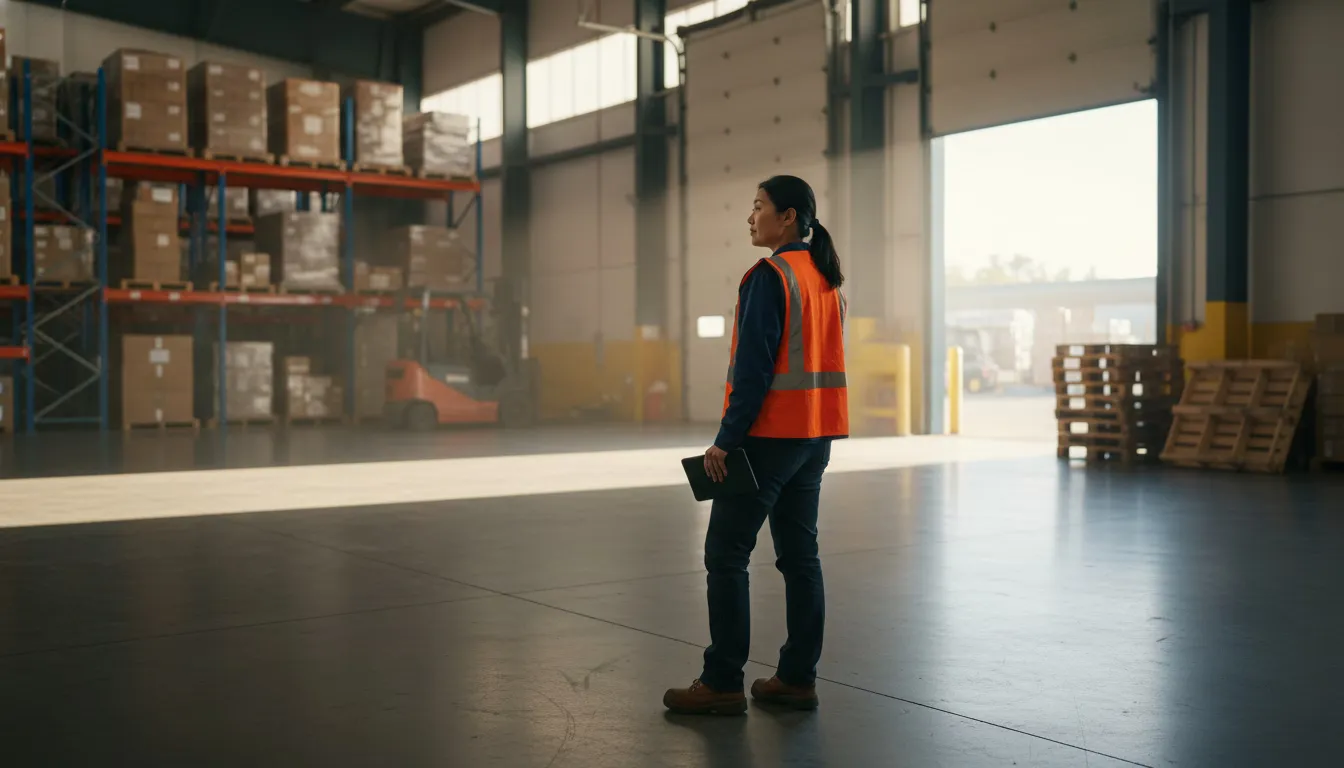· ShiftFlow Editorial Team · Glossary · 7 min read
What Is Frictional Unemployment? Definition, Examples & Guide
Learn what frictional unemployment means in workforce management, how it differs from structural unemployment, typical duration (1–3 months), why it's considered healthy for the economy, and strategies to reduce hiring friction.

What Is Frictional Unemployment?
Frictional unemployment is the temporary period when workers are between jobs, entering the workforce for the first time, or actively searching for better opportunities. This natural transition typically lasts 1–3 months and represents the time needed for job seekers and employers to find suitable matches.
Unlike other forms of unemployment caused by economic downturns or structural industry changes, frictional unemployment occurs even in healthy economies. It reflects workers making informed career decisions rather than accepting the first available position.
Quick Answer
Frictional unemployment is the short-term gap between leaving one job and starting another. It’s considered a normal, healthy part of labor markets as workers search for positions that match their skills and preferences.
According to Bureau of Labor Statistics data, even during periods of full employment (4% unemployment rate or lower), 2–3% of the workforce experiences frictional unemployment at any given time.
What Causes Frictional Unemployment?
Several factors contribute to frictional unemployment in modern labor markets:
Voluntary Job Changes
Workers leaving positions to find better pay, improved benefits, career advancement, or work-life balance create the largest share of frictional unemployment. This voluntary transition period allows workers to be selective rather than desperate.
New Labor Market Entrants
Recent graduates, returning parents, military veterans transitioning to civilian careers, and workers relocating to new cities all experience frictional unemployment as they search for initial positions in new markets.
Information Gaps
Even with modern job boards and professional networks, matching the right candidate to the right position takes time. Employers need to review applications, conduct interviews, check references, and make offers—processes that rarely complete in less than 2–4 weeks.
Geographic Mismatches
Workers in declining regional economies often face extended frictional unemployment when relocating to growing markets. The logistical challenges of moving, housing searches, and family considerations extend transition periods.
How Does Frictional Unemployment Differ from Other Types?

| Unemployment Type | Duration | Cause | Voluntariness | Economic Impact |
|---|---|---|---|---|
| Frictional | 1–3 months | Job transitions and searches | Voluntary | Healthy/Normal |
| Structural | 6+ months | Skills mismatch | Involuntary | Concerning |
| Cyclical | 3–12+ months | Economic recession | Involuntary | Problematic |
| Seasonal | 2–6 months | Predictable industry cycles | Semi-voluntary | Expected |
Key Differences
Frictional unemployment is short-term and voluntary, representing normal labor market transitions. Structural unemployment is long-term and involuntary, caused by fundamental mismatches between worker skills and available positions due to technological change or industry decline.
Cyclical unemployment results from economic downturns and affects many workers simultaneously. Seasonal unemployment follows predictable patterns in industries like agriculture, construction, and tourism.
Why Is Frictional Unemployment Considered Healthy?

Economists view frictional unemployment as a positive indicator of labor market efficiency for several reasons:
Better Job Matches
Workers who take time to search find positions that better align with their skills, interests, and career goals. This leads to higher job satisfaction, longer tenure, and improved productivity.
Market Efficiency
The search period allows employers to evaluate multiple candidates and select the best fit. This improves organizational performance and reduces costly hiring mistakes.
Wage Optimization
Workers who search strategically typically secure higher compensation than those who accept immediate offers. This competitive process helps establish fair market wages.
Innovation and Growth
Labor mobility enabled by frictional unemployment allows workers to move from declining industries to growing sectors, facilitating economic adaptation and innovation.
What Is the Typical Duration of Frictional Unemployment?

The Bureau of Labor Statistics reports that the median duration of unemployment for job leavers (voluntary transitions) is 1.5 to 2.5 months during healthy economic conditions.
Duration by Role Type
- Entry-level positions: 3–6 weeks
- Skilled trades: 4–8 weeks
- Professional roles: 6–12 weeks
- Executive positions: 3–6 months
- Specialized technical roles: 2–4 months
Workers with in-demand skills in growing industries typically experience shorter frictional unemployment periods than those in declining sectors or with specialized skill sets that have fewer matching opportunities.
How Do You Reduce Frictional Unemployment in Your Organization?

While some frictional unemployment is inevitable and healthy, employers can implement strategies to reduce unnecessary friction in their hiring processes:
Streamline Hiring Processes
Reduce time-to-hire by using applicant tracking systems, conducting efficient interviews, making prompt decisions, and providing clear timelines to candidates throughout the process.
Improve Job Visibility
Post openings on multiple platforms, maintain an active employer brand, leverage employee referral programs, and ensure job descriptions accurately reflect role requirements and compensation ranges. Clear employment status expectations help candidates self-select appropriately.
Build Talent Pipelines
Maintain relationships with promising candidates even when no immediate openings exist. Tools like employee directories help track internal talent for promotion opportunities before looking externally. Strong job orientation programs reduce early turnover that creates new frictional unemployment cycles.
Offer Competitive Packages
Clear, competitive compensation and benefits reduce the likelihood that newly hired workers will continue searching. Be transparent about hourly rates, shift differential premiums, and growth opportunities during recruitment. Avoid blacklisting practices that artificially extend job searches.
Enhance Onboarding
Strong onboarding programs reduce early turnover, which would create new frictional unemployment. Set clear expectations, provide adequate training, and assign mentors to new team members.
Many organizations managing shift-based teams use scheduling software to quickly integrate new hires into existing rotations, reducing the administrative friction that delays start dates.
What Is the Economic Impact of Frictional Unemployment?
Positive Impacts
- Improved job matching leads to higher productivity
- Competitive search processes establish market-clearing wages
- Labor mobility enables economic adaptation and innovation
- Worker choice and agency improve overall job satisfaction
Negative Impacts
- Lost economic output during search periods
- Reduced consumer spending from temporarily unemployed workers
- Extended searches can deplete savings and cause financial stress
- Geographic mismatches may leave regional talent shortages unresolved
Most economists consider frictional unemployment rates of 2–3% optimal for a healthy economy, striking a balance between labor market efficiency and minimizing lost productivity.
How Do You Calculate Your Organization’s Role in Frictional Unemployment?
Track these metrics to understand how your hiring practices contribute to or reduce frictional unemployment:
Time-to-Fill
Measure the days between posting a position and accepting an offer. Industry benchmarks suggest 30–45 days for most roles. Longer periods extend frictional unemployment for candidates.
Time-to-Start
Calculate the gap between offer acceptance and the new hire’s first day. Standard notice periods are two weeks, but extended gaps may indicate unnecessary friction.
Early Turnover Rate
Monitor departures within the first 90 days. High early turnover creates repeated frictional unemployment cycles and suggests problems with hiring, onboarding, or role clarity.
Offer Acceptance Rate
Low acceptance rates (below 85%) may indicate compensation misalignment or poor candidate experience, forcing candidates to continue their job searches elsewhere.
The Bottom Line
Frictional unemployment is the natural, temporary period when workers transition between jobs or enter the workforce. Unlike problematic structural or cyclical unemployment, this 1–3 month search period is considered healthy—enabling better job matches, competitive wages, and economic efficiency.
Organizations can reduce unnecessary hiring friction by streamlining processes, improving visibility, offering competitive packages, and building talent pipelines. Try ShiftFlow’s scheduling tools to quickly integrate new hires into shift rotations and reduce time-to-productivity.
Sources
- U.S. Bureau of Labor Statistics – Employment Situation Summary
- U.S. Department of Labor – Types of Unemployment
- Federal Reserve Economic Data (FRED) – Labor Market Indicators
Further Reading
- Employment Status Explained – Understanding worker classifications
- Mandatory Overtime Guide – Balancing workload without overworking staff
- Job Abandonment Policies – Managing unexpected departures
Frequently Asked Questions
What is frictional unemployment?
Frictional unemployment is the temporary period when workers are between jobs, entering the workforce, or searching for better opportunities. It typically lasts 1–3 months.
How long does frictional unemployment typically last?
Frictional unemployment typically lasts 1 to 3 months, representing the time needed for job searches, interviews, and transitions. Duration varies by industry and skill level.
What is the difference between frictional and structural unemployment?
Frictional unemployment is short-term and voluntary, occurring during normal job transitions. Structural unemployment is long-term and involuntary, caused by skills mismatches with available positions.
Why is frictional unemployment considered natural?
Economists consider it natural because it reflects workers making informed career choices rather than accepting the first available job, leading to better matches and higher productivity.
Can frictional unemployment be eliminated?
No, frictional unemployment cannot and should not be eliminated. It’s a necessary feature of healthy labor markets that allows workers and employers to make optimal matches.
What is a healthy frictional unemployment rate?
Economists consider 2–3% frictional unemployment healthy for a functioning economy, representing normal turnover and job search activity.
How do you reduce frictional unemployment?
Reduce frictional unemployment by streamlining hiring processes, improving job visibility, offering competitive compensation, building talent pipelines, and enhancing onboarding programs.
Does frictional unemployment affect the economy?
Frictional unemployment has minimal negative economic impact when kept to 2–3% of the workforce. It actually improves economic efficiency by enabling better job matches and appropriate wage discovery.




